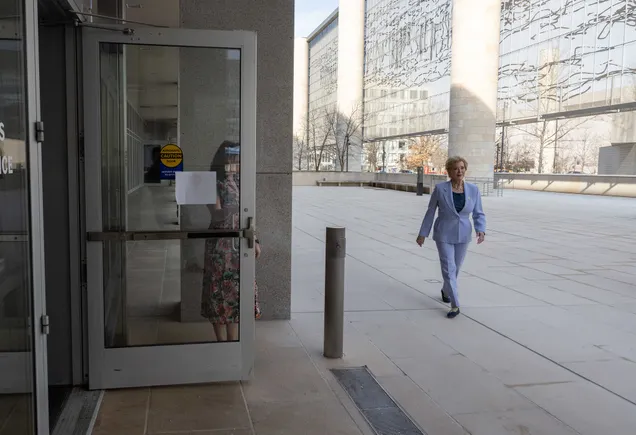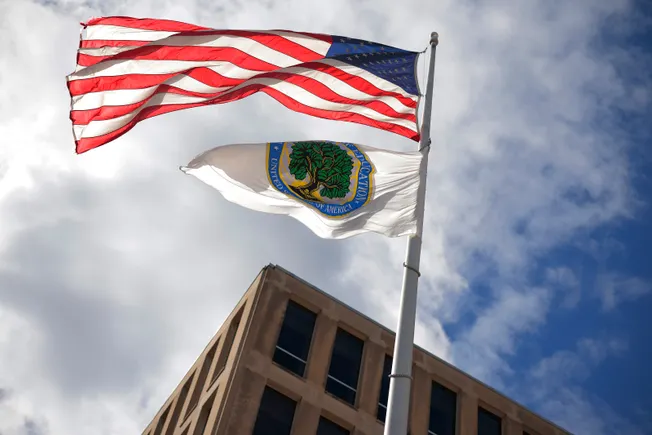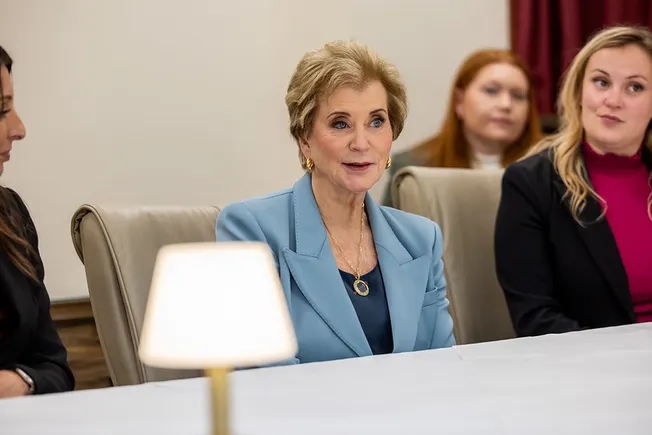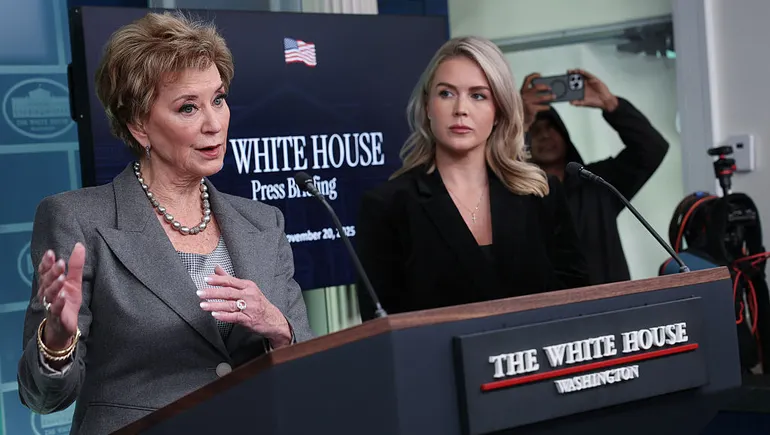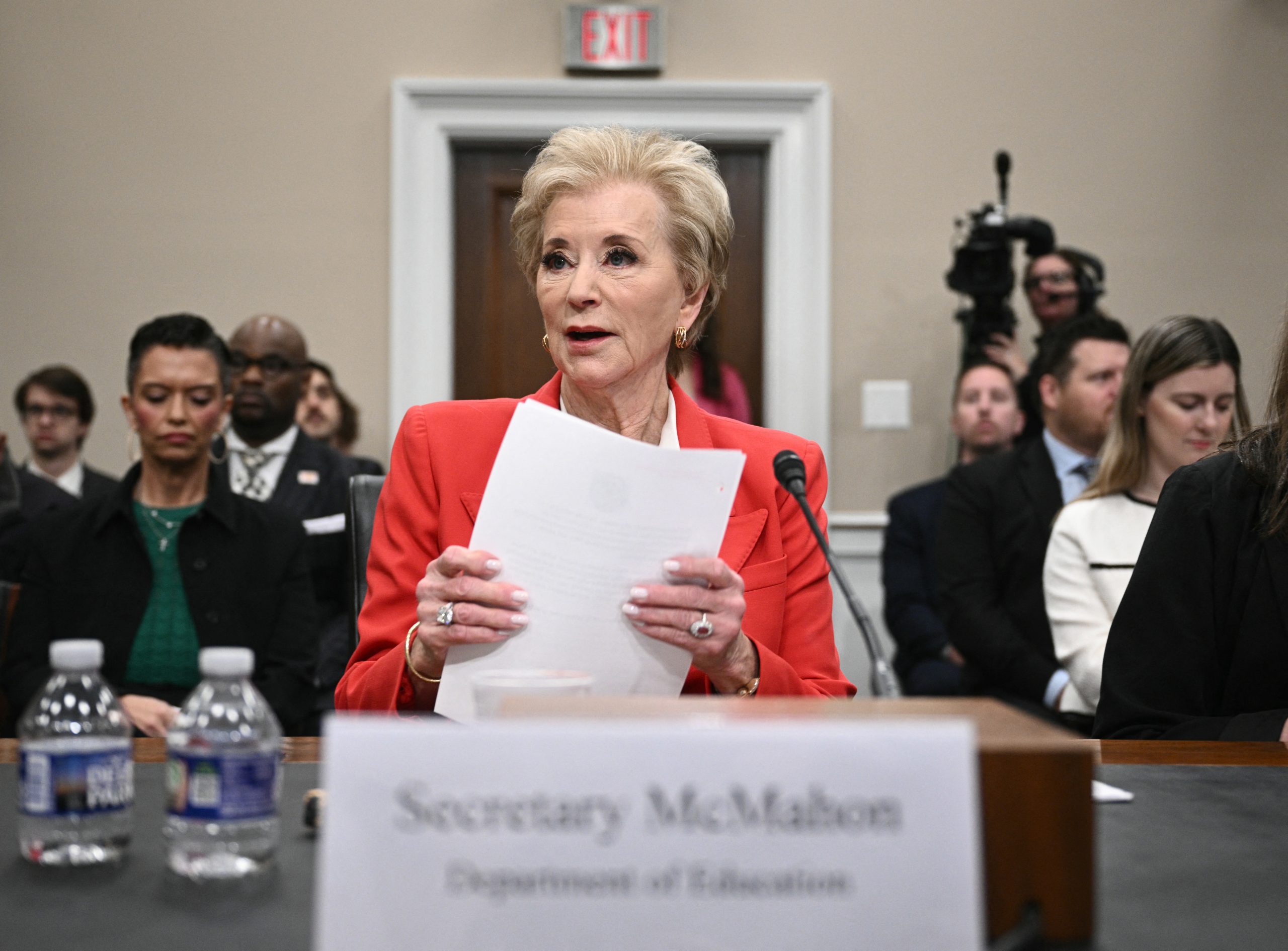As the U.S. Department of the Interior prepares to take on a greater role in administering federal funding for tribal colleges, institutional leaders fear financial uncertainty and losing long-standing trust with the Education Department.
The grant program is one of dozens the Education Department reshuffled to other federal agencies late last month in yet another effort by Secretary Linda McMahon to trim down its duties and ultimately dismantle the department. Through an interagency agreement, the Department of the Interior will now manage tribal colleges’ Title III funding, while ED retains oversight and policymaking responsibilities, according to an Education Department announcement.
Trump administration officials argue the move makes sense. The Department of the Interior, home to the Bureau of Indian Education, already oversees tribal K–12 schools and two tribal higher ed institutions, Haskell Indian Nations University in Kansas and Southwestern Indian Polytechnic Institute in New Mexico. The Department of the Interior also already administers higher education scholarships for Native students and other grant funding for tribal colleges.
Secretary of the Interior Doug Burgum said in the announcement that his department will assume administrative responsibilities “for enhancing Indian education programs, streamlining operations, and refocusing efforts to better serve Native youth and adults across the nation.”
The American Indian Higher Education Consortium said in a statement that it’s monitoring the policy shift and plans to work closely with the Department of the Interior “to ensure stability and continuity” for institutions and their students.
“AIHEC will continue to advocate for approaches that uphold the federal government’s trust and treaty obligations to Tribal Nations and protect the vital role of TCUs in advancing Tribal sovereignty and student success,” the statement read.
Concerns and Questions
Despite reassurances, tribal college leaders are leery of the upcoming change.
Stephen Schoonmaker, president of Tohono O’odham Community College in Arizona, said he understands the logic of the shift, given tribal colleges already have a strong relationship with the Bureau of Indian Education.
But the department also proposed cutting more than 80 percent of tribal colleges’ funding earlier this year, from roughly $127 million last year to about $22 million this year.
Congress didn’t approve the cut, but the proposal “was an existential threat to tribal colleges,” Schoonmaker said.
He believes institutions like his are safest when they have grants coming from multiple federal agencies. That way, if one agency cuts funding, there are still federal dollars flowing in from elsewhere.
“Putting everything under one basket that could be just cut all at once is not reassuring,” he said.
Even though he’s had positive experiences working with the BIE, he said he’s jarred by the uncertainty.
“With this administration, there is a propensity to shuffle things around and make a flurry of proposals, some of which get headway, some of which get dropped almost immediately,” Schoonmaker said, “and it makes it challenging to plan, to ensure for our students and for our employees and for our communities that we serve that the way we’ve been structured, the way that the trust and treaty obligations work … will continue to be honored.”
The administration hasn’t shared a transition plan with tribal college leaders, adding to their worries, said Chris Caldwell, president of the College of Menominee Nation in Wisconsin.
According to Caldwell, tribal college leaders are most concerned about the future of the funding mechanisms and support that has historically come from the Department of Education. “We want to make sure that those are retained or even increased,” Caldwell said.
He also questions how much the BIE will listen to tribal college leaders in its decision-making. For example, its proposal to slash tribal college funding came shortly after a listening session with institutional leaders, he said.
At the same time, he’s buoyed by the fact that bipartisan support not only saved colleges from proposed cuts, but it increased their funding; the Education Department funneled a historic one-time tranche of funds to tribal colleges, redirected from grants for other minority-serving institutions, earlier this year. Contributions from philanthropist MacKenzie Scott, including a $10 million gift to the College of Menominee Nation, have also offered some extra stability.
“I have been on roller coasters, but never a roller coaster like this,” Caldwell said. But “I think that strong bipartisan support bodes well for us, even in the midst of this restructuring.”
Twyla Baker, president of Nueta Hidatsa Sahnish College in North Dakota, said what’s most concerning to her is that the interagency agreement came as a “total surprise.”
“Tribes, tribal nations, tribal educators should have known about this,” she said. They “should have had input on this well before any type of moves should have been made, before any type of interagency agreements should have been signed … Consultation should have happened and needs to happen quickly if we’re going to continue on this path.”
She also has her doubts about ED shifting responsibilities over to the Department of the Interior. She said tribal college leaders have worked to develop expertise within the Education Department about their institutions and now it feels like that effort was for naught.
“You’re kind of pulling the rug out from under us,” she said. “And that structure, the regularity of how business is done, is going to be dismantled. You can’t just shove it over to somebody else’s responsibility and expect it to work well.”
She worries the transition could affect students if services and resource allocation are interrupted.
“That type of interruption can be pretty untenable for small schools in rural areas, which is what a lot of us are.”
Whatever happens, Baker said the transition is “a diversion of energy that didn’t necessarily have to happen where we could have been just focusing on our missions.”
A Fraught Past
The Bureau of Indian Education has come under fire in the past for its negligent oversight of K–12 schools and the two higher ed institutions in its care.
Members of Congress held a heated hearing last year in which many accused the Bureau of Indian Education of responding slowly or inadequately to student and employee complaints at Haskell Indian Nations University, including reports of sexual assault. Some Kansas lawmakers even proposed removing Haskell from federal control.
The BIE has also historically drawn criticism for poor academic outcomes, limited reporting, inadequate technology and deferred maintenance backlogs at its K–12 schools, ProPublica reported. A 2014 report by Sally Jewell, interior secretary under President Barack Obama, and former Education Secretary Arne Duncan called the BIE a “stain on our Nation’s history.” The report denounced the agency for producing “generations of American Indians who are poorly educated” and promised to undertake reforms.
(Tony Dearman, director of the Bureau of Indian Education since 2016, told ProPublica that the BIE has undergone changes since then, including a more direct process to inspect school buildings, make major purchases and enter into contracts.)
In a statement to Inside Higher Ed, the Department of the Interior described its new responsibilities toward tribal colleges as an “opportunity to better serve Native youth” and emphasized plans to solicit tribal college leaders’ input during the transition.
“As we move forward with efforts to improve the coordination and delivery of Native American education programs, the Bureau of Indian Education will continue to engage closely with tribes and education partners to ensure their perspectives inform our work,” the statement read.
“We value the input we receive from tribes and stakeholders, and we remain dedicated to building a future where Native students have the tools, support, and opportunities they need to thrive for generations to come.”

